The ultimate guide to raised beds
 Lee Burkhill: Award Winning Designer & BBC 1's Garden Rescue Presenters Official Blog
Lee Burkhill: Award Winning Designer & BBC 1's Garden Rescue Presenters Official Blog

Updated 2024: This raised bed guide will explain exactly when and how to use raised beds for successful gardening. Raised beds can be used in nearly all gardens regardless of the condition of your soil. It allows you to build up away from poor, stony ground and choose the soil you need for the types of plants or vegetables you want to grow.
Raised beds are easy to maintain and can take your garden from bland and boring to incredible. Raised beds allow you to garden even in the most hospitable of places bringing the plants and flower up to eye level.
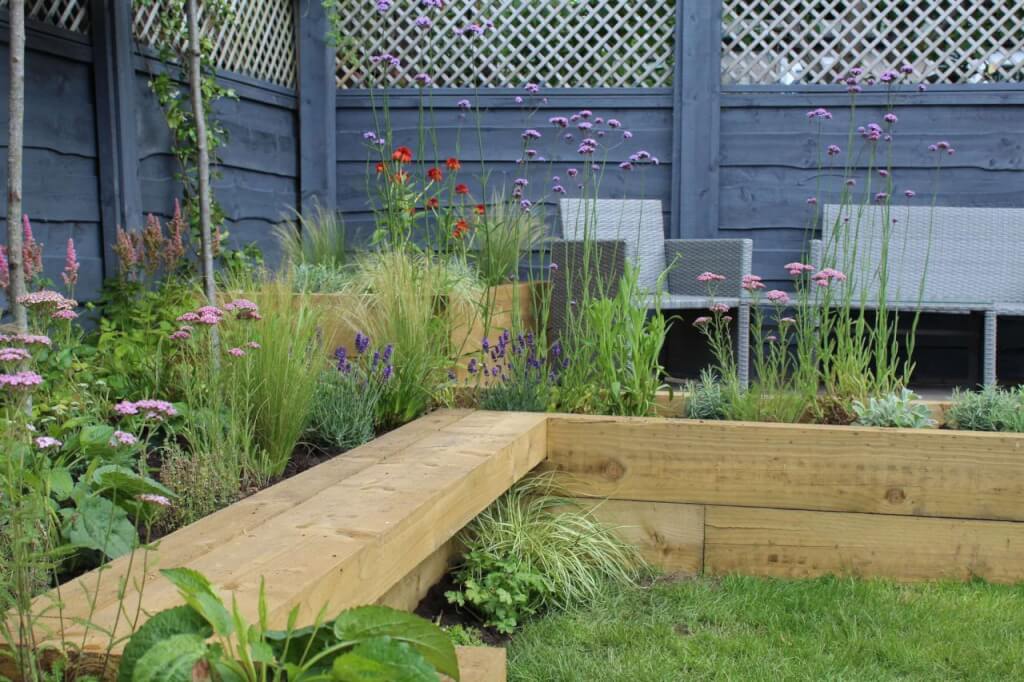
Raised beds can also be used as a really striking garden design feature too, as shown in my Family Garden Transformation installation. So let's take a closer look at why raised beds are so popular in gardens across the world.
A raised bed or 'raised bed gardening' is where the soil is lifted above ground level and contained within a structure. The bed is usually created by building a frame or container that is filled with soil and organic matter, such as compost or leaf mould. Depending on the desired height, the bed is typically raised several inches to a few feet above ground level.
This could be using a wooden box, stone sides or scaffold boards. Raised beds allow planting on top of an existing soil level. If you think of a simple rectangle that can be planted into (or other shapes depending on the material you use).
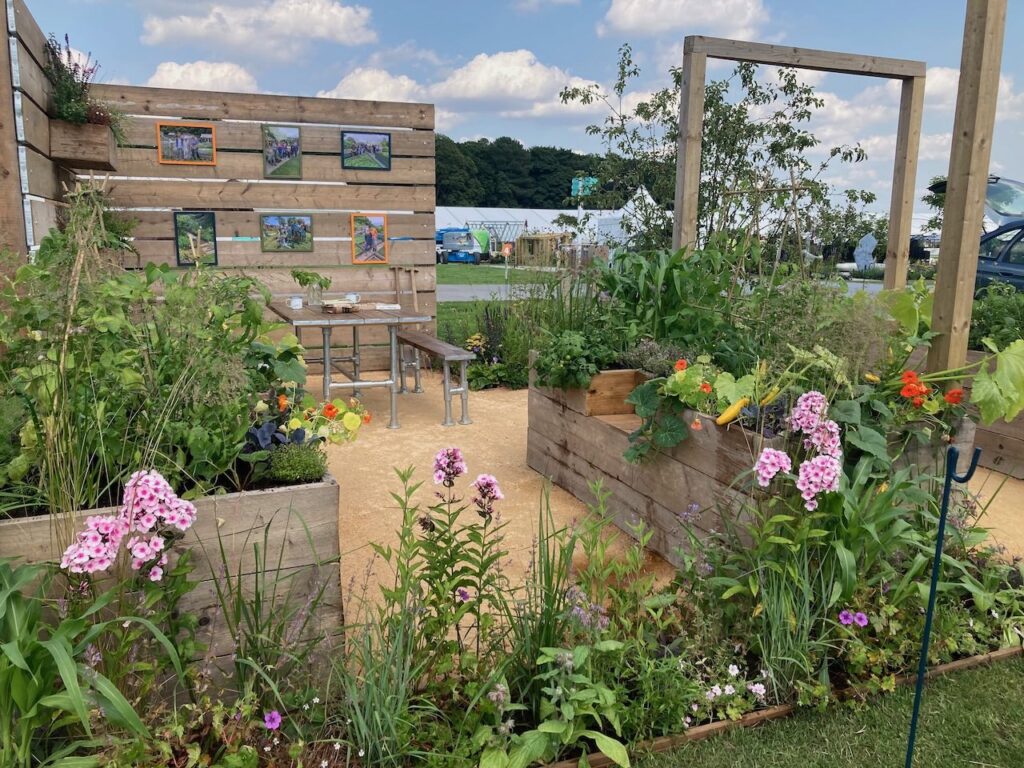
This may mean planting on top of a current garden border, paving terrace, unused areas or structures. It allows you to create a raised area in which to plant. Raised beds bring the height of the gardening area up to a level of your choice.
This reduces backache and bending when gardening. This also means that you can avoid having to undertake a large amount of hard landscaping because you don't need to excavate huge amounts of soil or debris first.
You simply build the bed and fill it with soil, and you're good to go!
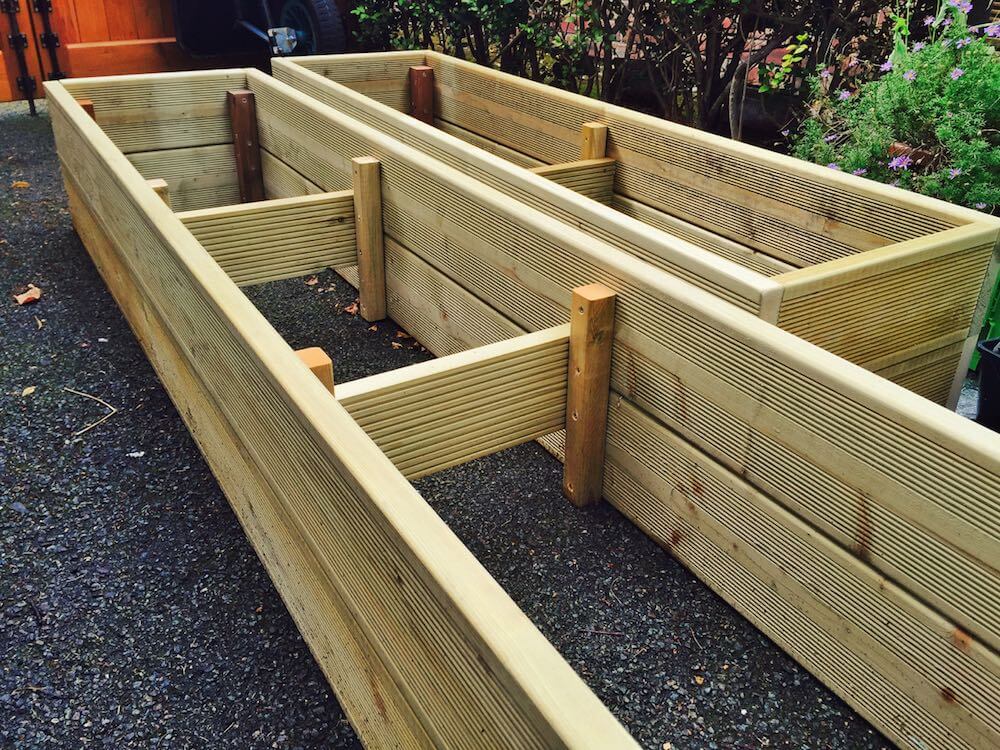
There's also no real need to get a builder or construction team round to create raised bed planting in most cases. The hardest part is usually filling them with soil, which requires some manpower. You do need to be relatively comfortable with some light DIY, using a hand saw screwdriver and spirit level.
There are many benefits to gardening with raised beds, many of which are related to accessibility and the freedom to improve soil quickly for growing vegetables. Below are some of the high-level benefits of building raised beds in your garden.

There are few drawbacks to raised bed gardening other than the effort required to set them up or the cost of the materials. Below are a few drawbacks you should know before choosing raised beds for your garden design.
Did you know that you can take my course and learn how to become a Garden Ninja yourself? Click here for details
The most common form of a raised bed is the wooden raised bed style using wooden sleepers, gravel or scaffold boards.
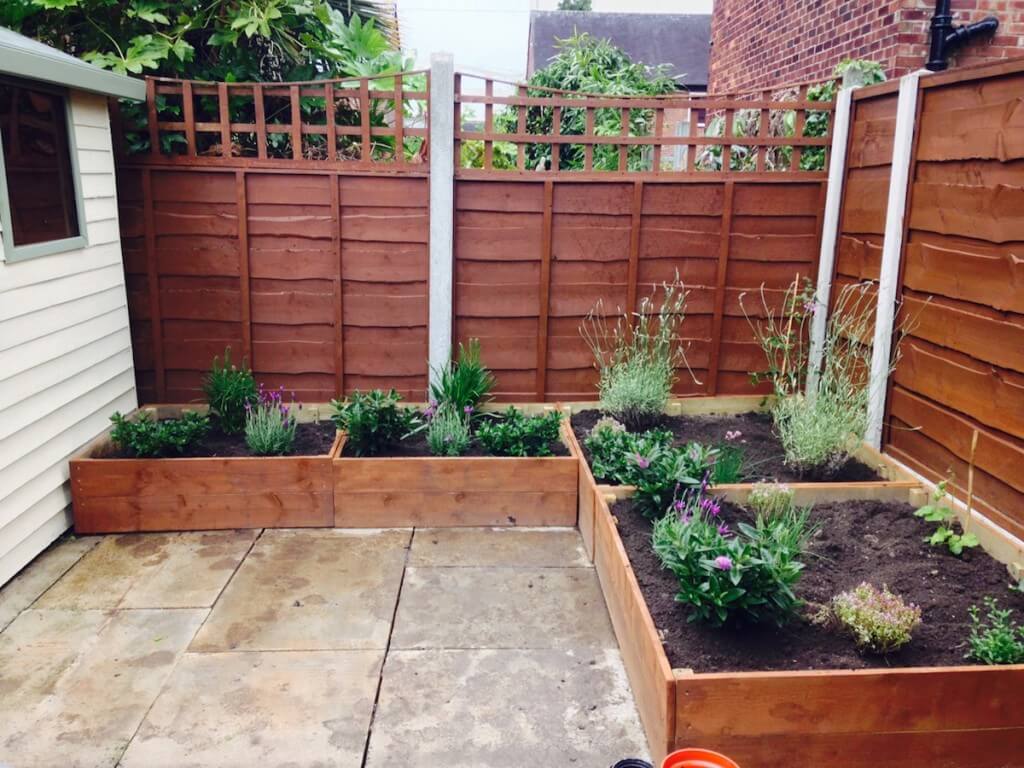
However, raised beds can be made of any material, not just wood. They can also be made of metal, brick, or stone if necessary.
Usually, wood is the easiest to work with for raised beds and lends itself to a garden. I prefer raised beds made from wood as they blend in with nearly all surroundings, which means that you can use them for a variety of different planting plans. Wooden raised beds warm up quickly and require the least amount of skill to install and work with.
If you're a beginner gardener or on a budget, I highly recommend using timber for your first raised beds. Spend the majority of your budget on decent-quality top soil and, of course, plants!
Did you know you can build a raised bed without timber or stone? In Scotland, mounded soil beds are used in some allotments and gardens to create raised beds without wooden sides. These sloping beds are great if you're on a budget or if you want a more natural appearance to your garden. These mounded beds can also reduce slugs, as there are no timber sides that stay damp, which can attract them!
There is also another type of raised mounded bed called Hugelkultur garden. This is where logs, old plant waste and organic matter are piled up into a mound. This then slowly starts to rot down. Allowing trees, vegetables and herbaceous plants to be grown on top of this mound. It's a super way to recycle garden waste and reduce the amount of expensive topsoil you need!
Raised beds can pretty much grow anything, depending on their size. A few good examples of prime plants for raised beds are:
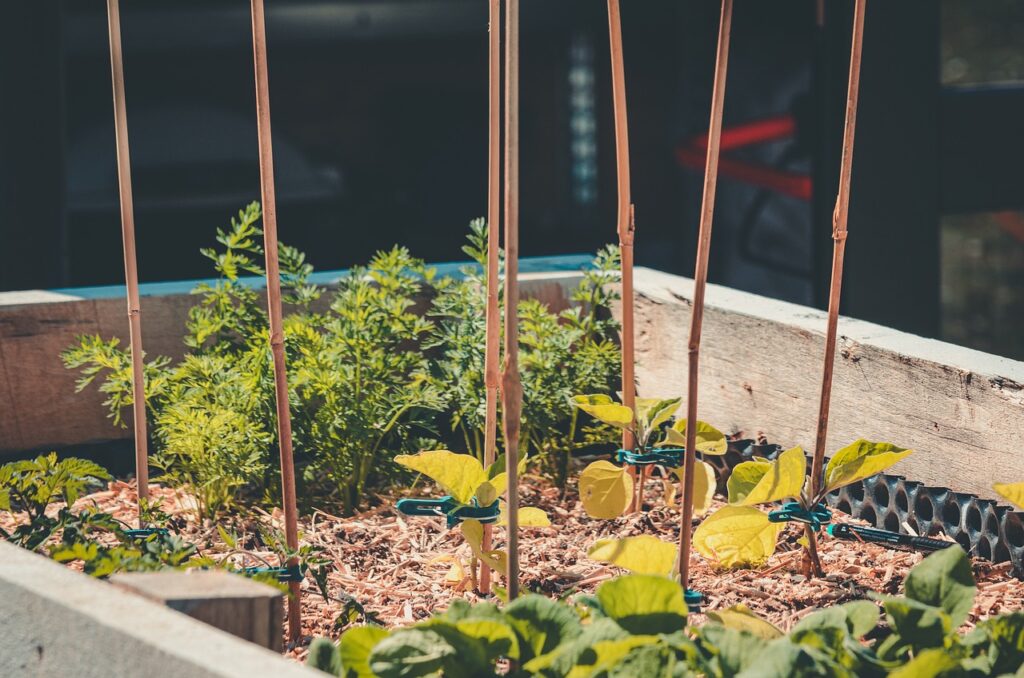
Before you go building your raised beds it's important to measure the size of them, where they are going to go and what you'll be planting in them. You must accurately measure the space in which your raised bed is going so that you have enough space and materials to build them.
The main measurements you will need when building a raised bed are the length, width & height of the raised beds.
Take a pad and always double-check your measurements.
Accurate measurements of raised beds are also essential for working out:
The best length for a raised bed is under 2 meters. This is because anything longer means you've got a long walk to get around them and you'll inevitably start taking shortcuts by jumping over the bed which is dangerous.
As a rule, any raised beds over 2 meters long will need braces. I always advise internal braces on all raised beds over 1 meter in length. This is because the soil is really heavy, and the pressure on the walls of a raised bed when the soil gets wet can be incredible. Bracing helps strengthen the raised bed.
If you're going over 2.5 meters in a one-piece raised bed, you should really be looking at railway sleepers and steel ties, as these are strong enough for really long raised beds.
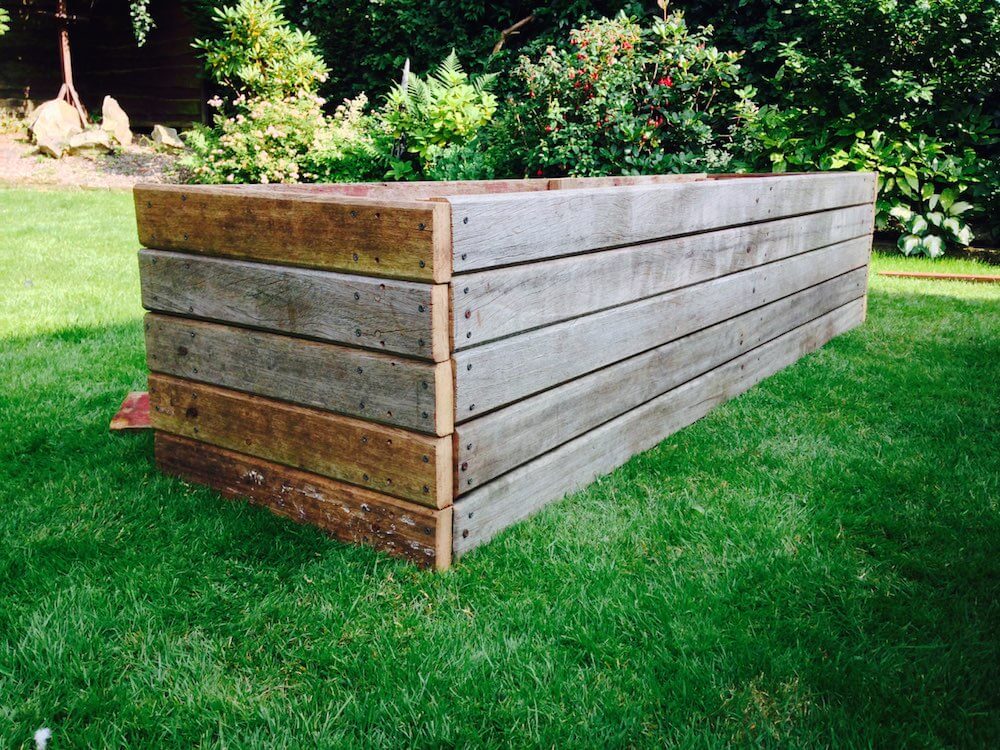
Another answer is to cut the entire length into a series of smaller raised beds. This also helps as if there is ever any damage. You can just replace one of the beds, not the entire raised bed! This can also be helpful as sometimes boundaries and adjacent walls are not entirely true, i.e. they may run on a slight angle.
By using multiple beds, you can make micro-adjustments to give the illusion of a straight line.
I usually recommend at least 90cm in width if you want to be able to plant two rows of plants. Thinner widths can be used especially for balcony planting and beds in restricted spaces.
For vegetable plots, I would recommend between 90cm and 1.2 meters.
Any raised bed over 1.2 meters wide will be difficult to reach over unless you plan to have access on all sides.
As a rough rule, 6 inches or 15cm is the minimum depth you will need. Any shallower than this, and you will need to work over the ground underneath. Since most people using raised beds are trying to avoid this you will need 15cm of topsoil for new planting. Also, if you are planting on top of a hard surface, this is the minimum depth.
Ideally, 40cm is a nice height for most raised beds to save your back.
60cm high raised beds are good if you want to perch and sit on the side if using railway timbers or sleepers.
Making a raised bed is not difficult, though it involves plenty of planning and measuring. Making your own raised beds gives you a sense of real achievement in the garden. Building raised beds requires some key tools which you will need:

If you want to make your own raised beds, then the step-by-step guide below will help you create a raised garden for fruit, vegetables or flowers in no time!
Once you have your measurements, double-check that they fit the space where the raised bed will go.
Cut your boards to the length you require them using your wood saw. For a 1m long raised bed the boards should be 1mt long. You then need to multiply the width of each individual board by the height you need the bed to be. This will give you how many 1m boards you need per side. So if a board is 30cm wide and you want your bed 60cm high you will need two boards for each length.
Next, cut the boards for the sides of the raised bed, also known as the depth. These will be your side panels. ie a 90cm deep raised bed will require a 90cm long board for your side panel. Again, cut enough boards to make the required height.
You will need to ensure the braces on the side boards are recessed. If they are dead on the edge, they won't provide a flush joint, as they will butt up against the other brace when joined to the front and back panel.
You will need to ensure the braces on the side boards are recessed. If they are dead on the edge, they won't provide a flush joint, as they will butt up against the other brace when joined to the front and back panel.
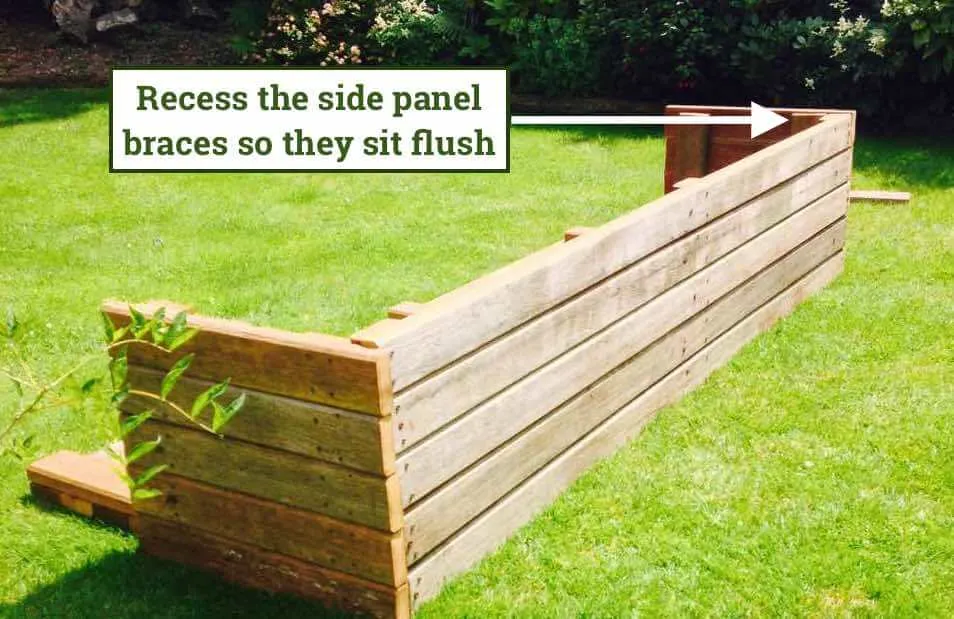
You then need to use braces to secure the rows of board or timber. The photo below shows how the braces can be positioned. It also shows you the front view with the screws going through the face of the side of the raised bed to the brace.
Measure the height of your bed and then cut enough braces for the faces of the bed. A minimum of two on each face should be used. I usually use three for strength.
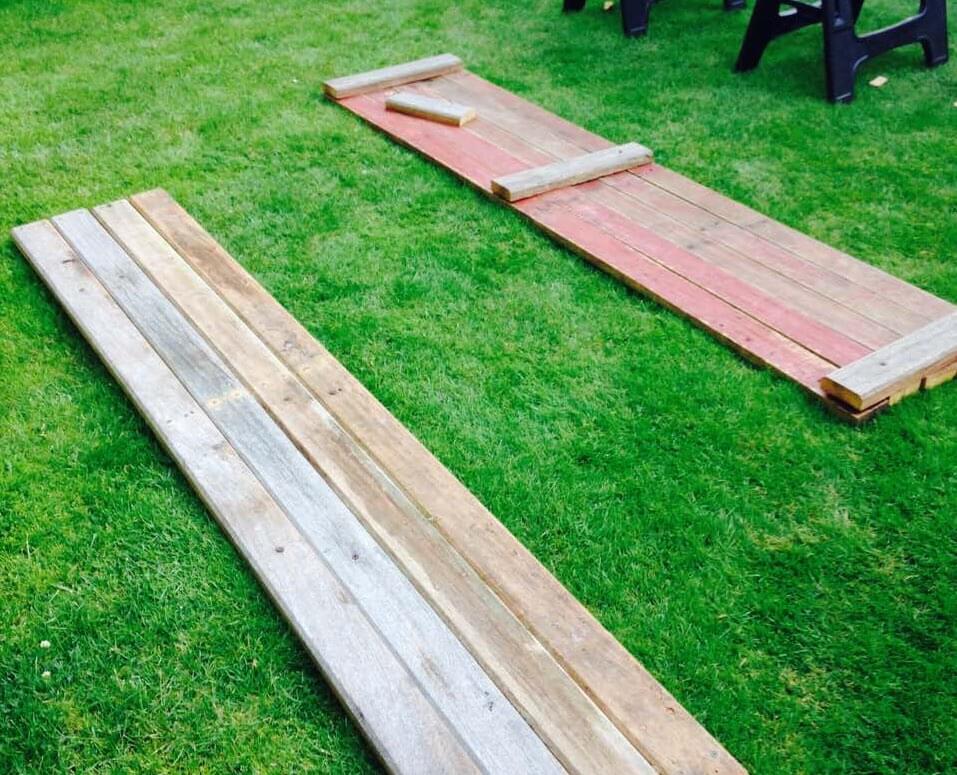
Drill a pilot hole and then screw these braces from the facing side inwards using your 75mm screws. Decking screws can also be used but be careful, as some can rust and stain your wood.
You should now have 4 pieces. 2 Long panels and 2 shorter side panels. The long being the length. The shorter pieces make the depth of the raised bed.
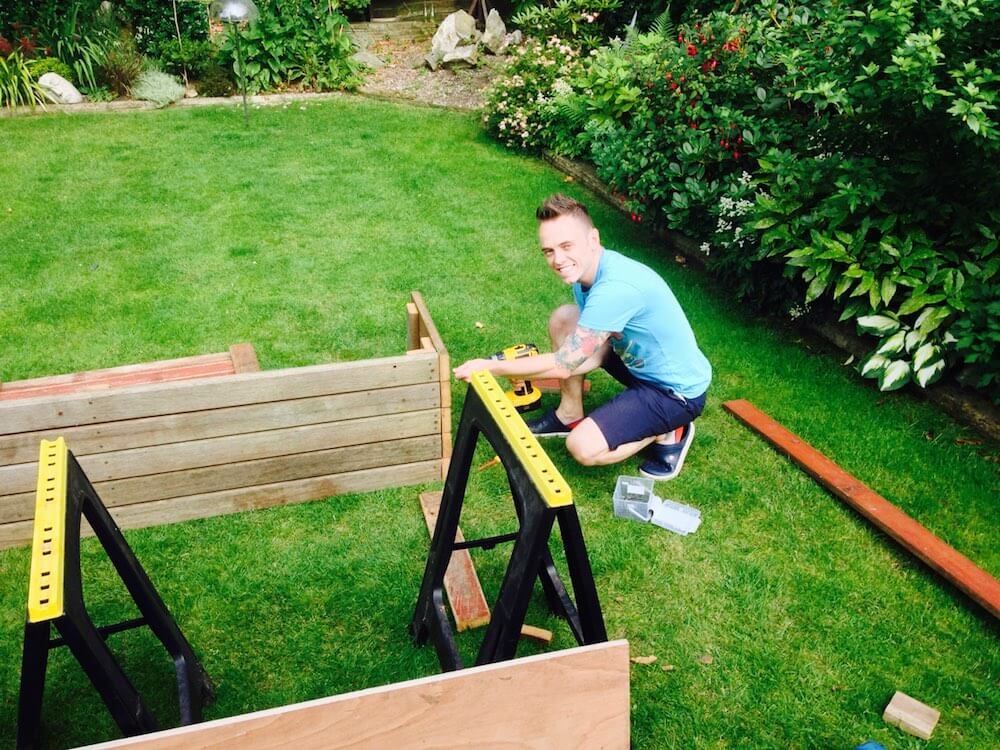
Once you have braced your four sides, you can start to screw the sides together. Drill pilot holes and then screw the edges together. Use clamp supports or a helping hand to keep them steady whilst you position them.
Once all the screws are in, you then need to add another brace to the inside of the raised bed. This ideally should be placed in the middle and stops the raised bed from bowing when full of soil. It also adds strength & rigidity to your raised bed.
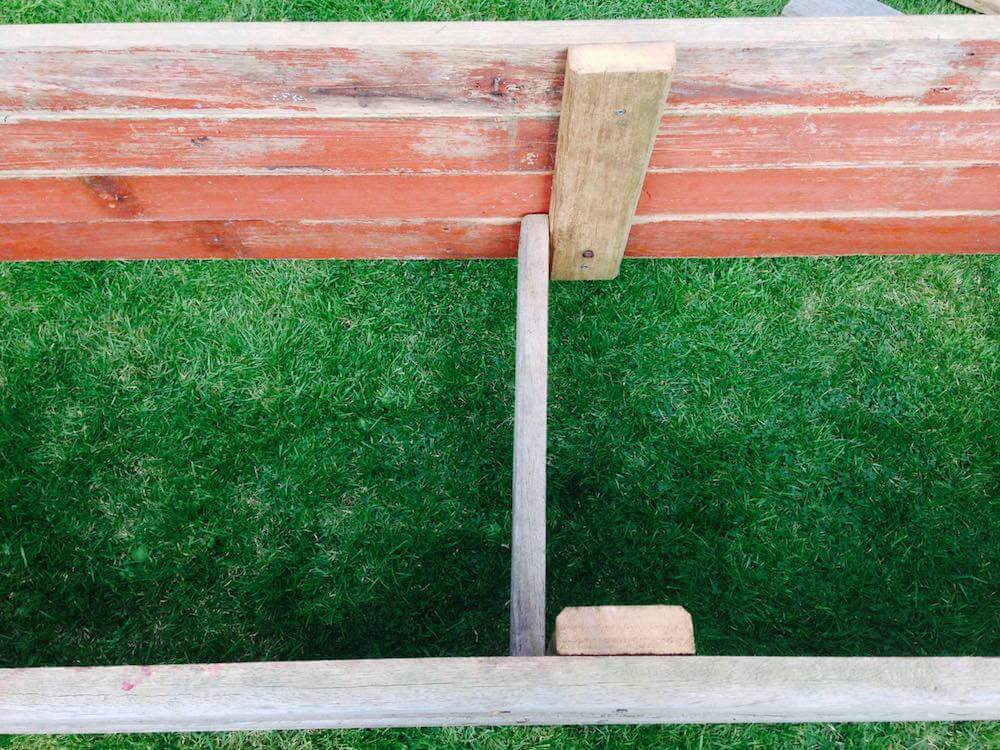
Once that's complete, double-check your bed for signs of movement or any joints that don't feel tight and secure. Ensure all screws are tightened before you move or add the lip.
You can now add a mitred edge or lip if you so wish. This gives the raised bed a more finished look and somewhere to rest your tools, plant pots or a pint of beer! For this, you will need to measure the length on a new board and mark it up.
Then, using a mitre saw set to 45 degrees, cut from that measurement. Do this on each side, flipping the mitre to the opposite 45-degree angle so the cuts face away from each other. Measure the sides and do the same, ensuring they fit neatly before screwing them into the raised bed.
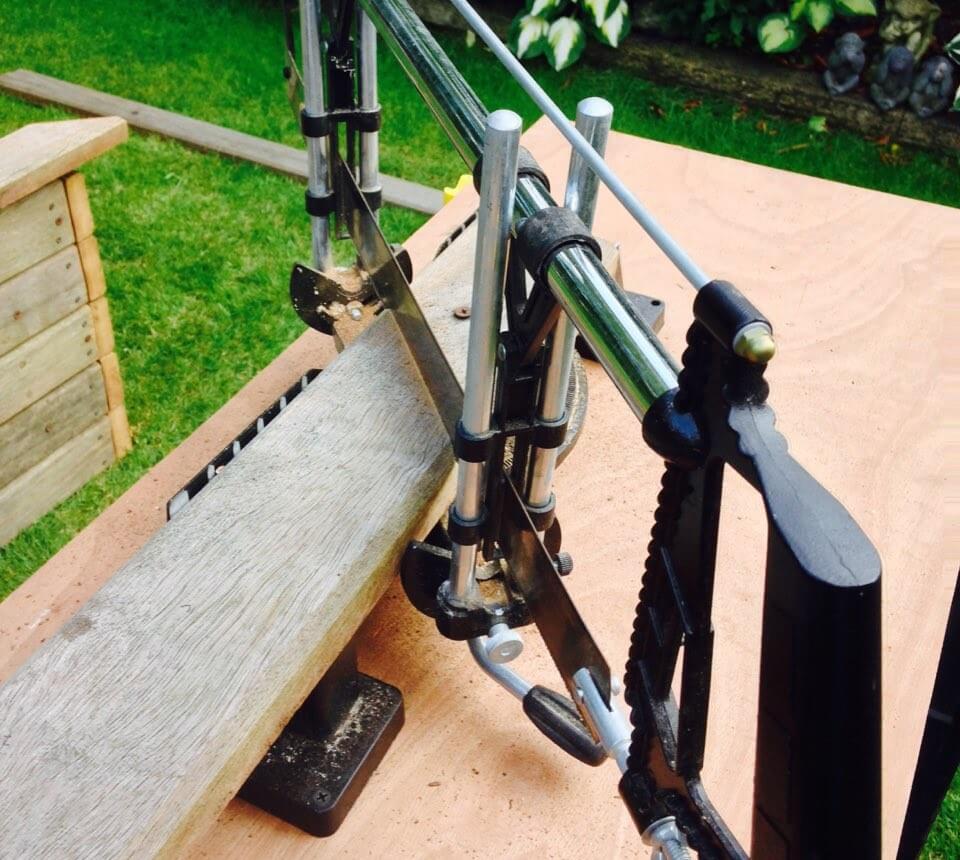
Once this is done, your raised bed should be complete!
Raised beds can also be a real design feature in a garden. Not only do they warm up quicker, allow you to choose your soil type and save backache in bending over but they can be incredibly stylish as well.
I recently designed and built an Outdoor living space using stone raised beds. These beds were clad in grey granite pavers and gave the outdoor garden room a really modern feel to it. You can see more on that design below if you're looking for raised beds in a contemporary garden.
Now you have your raised bed in position; you can start to fill it with the soil of your choice.
Ideally, you want a mix of loam and good organic matter in your beds. By choosing quality topsoil, you can ensure that whatever you plant in your raised beds has the best chance of producing wonderful flowers and large fruits!
1. Sandy (Free draining & lightweight)
2. Clay (Heavy, wet & nutrient-rich)
3. Silty (Light & moisture retentive)
The above descriptions refer to which particles of Sand, Silt, and Clay are most present in a soil sample. These are the mineral fractions of the soil and contain no organic matter themselves (they are inert on their own) but do provide a home for organic matter to thrive.
If you get to pick your own soil, then always opt for a more sandy-free draining soil when compared to clay. Alternatively, mix in some peat-free compost to heavy clay soil to help break it up. I have a detailed article on why soil type matters that you can read here if you want to know more about the best soil type for raised beds.
If you have taken up turf underneath the beds, then you can use this in the bottom. Simply turn the turf upside down and line the base of your raised bed with them, which is a great way to recycle and save costs on buying soil!
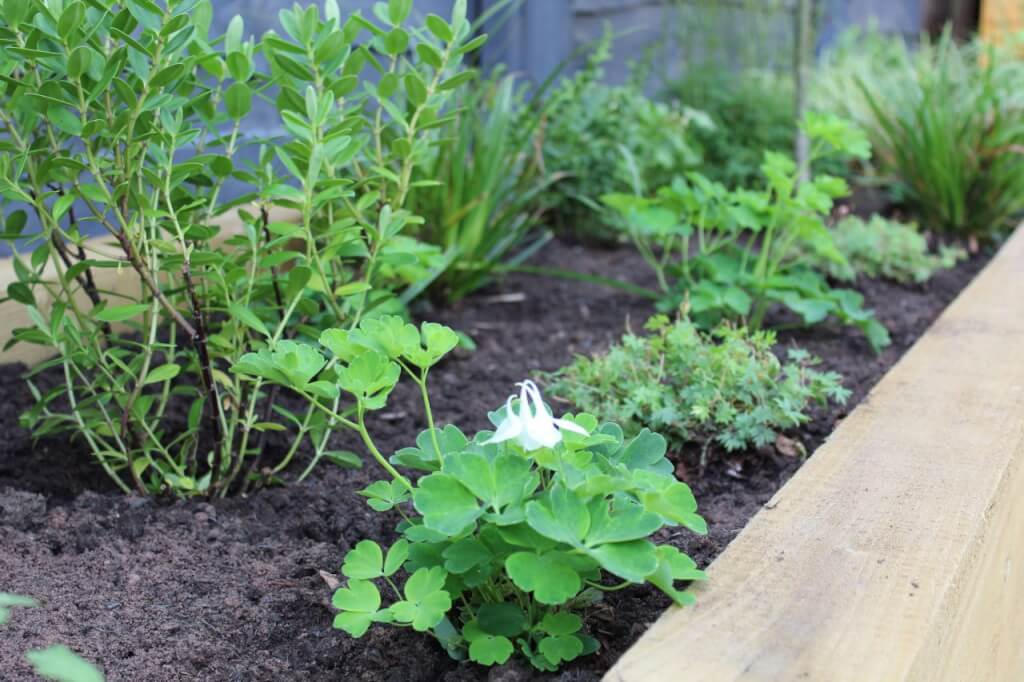
If you're putting raised beds on top of a lawn, you can start filling the raised bed with topsoil. You don't need to remove the turf or grass, as this will break down over time.
Now is a valuable time to improve the drainage of the ground where the raised beds are going, especially if they're going onto heavy clay soil or where the drainage is poor. Fork it over and add organic matter before you fit the bed.
Preparation is key, if you put a raised bed onto the compacted ground, you can end up with 'wet bed'. My guide to improving compacted soil below can show you how to improve soil conditions quickly and avoid this wet bed problem.
If your raised bed is placed on a non-porous surface such as tarmac or flags, it may be useful to break into one of the flags to allow for drainage. This will allow drainage and stop water from pooling at the bottom or causing 'wet bed'.
The wet bed is where the bottom of the bed is always damp as the drainage causes a backlog of water. This can also damage your plants and cause an awful smell.
If you're sitting the raised beds on ungrouted flags, the need for drainage is probably unnecessary. However, if its surface is non-porous or slow to drain, you'll need to break up it to allow water to drain from the raised bed.
See below for how to break up flags to allow for drainage. Use a lump hammer and goggles to smash the flag.
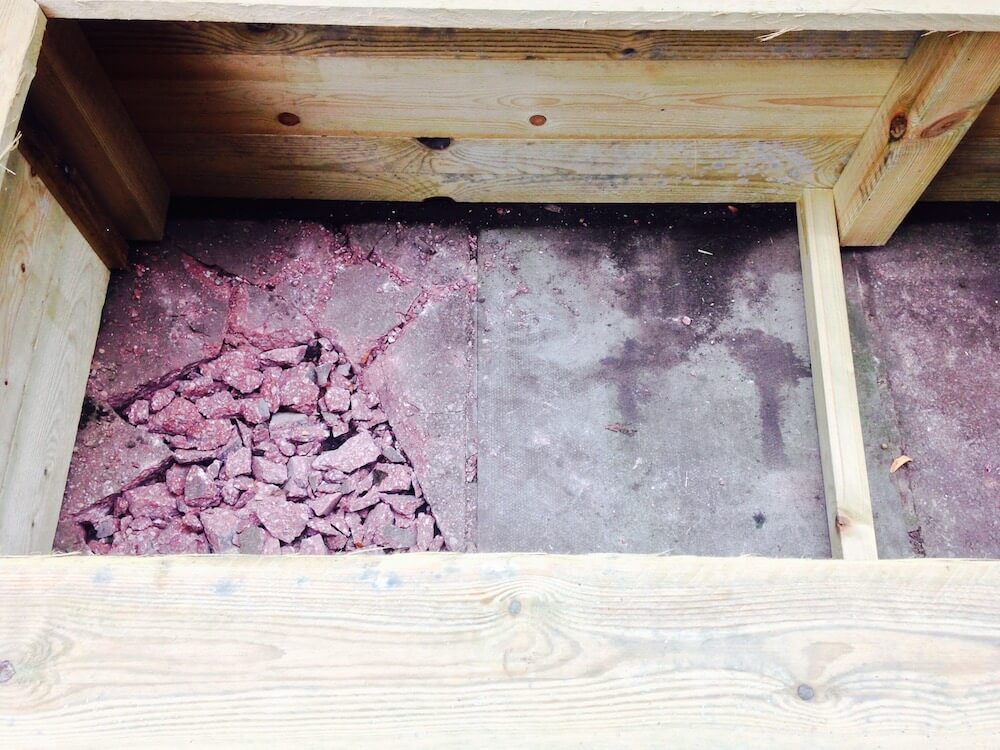
You need to remember to leave a gap between the very top of the bed and the soil level. I'd always leave a 2-3 inch gap between the very top and the soil level. This helps prevent the soil from spilling over onto the surrounding area. It also means that any small or new plants are slightly protected from any wind or immediate exposure.
When plants are young or new, any harsh winds can damage or slow down their ability to take root. It also means that when you water your plants, there's no wet, muddy water spillover!
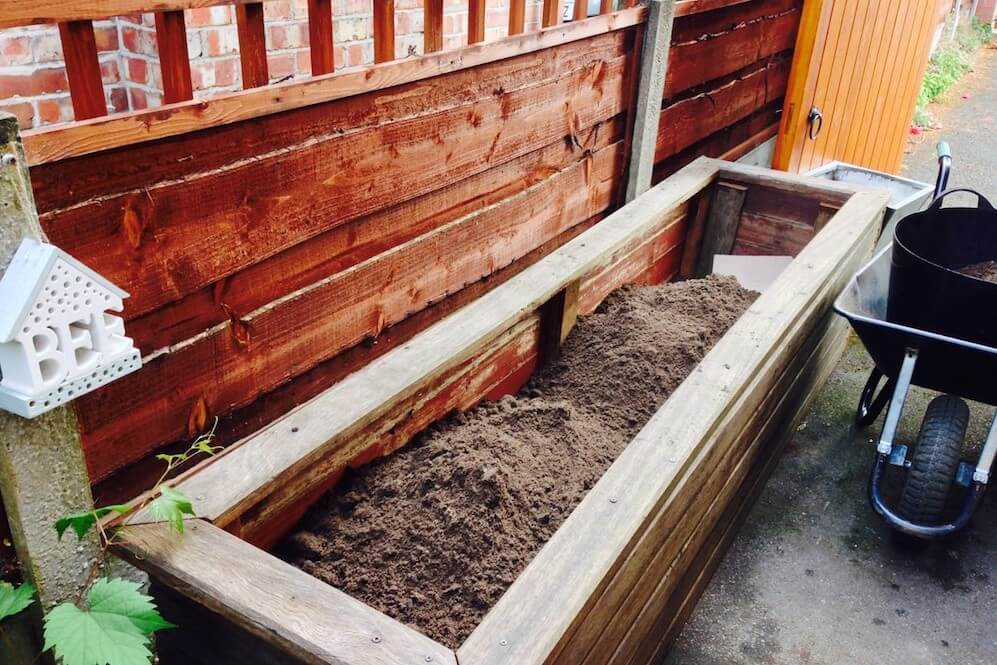
When filling the raised beds with topsoil, I'd always advise mixing in some compost or organic material to assist your new plants in taking root. You need to ensure that the soil is of a PH that is suitable for your plants, ideally neutral at 7 for most plants. If you're planting acidic-loving plants, you may need to acidify the soil by adding pine needle mulch.
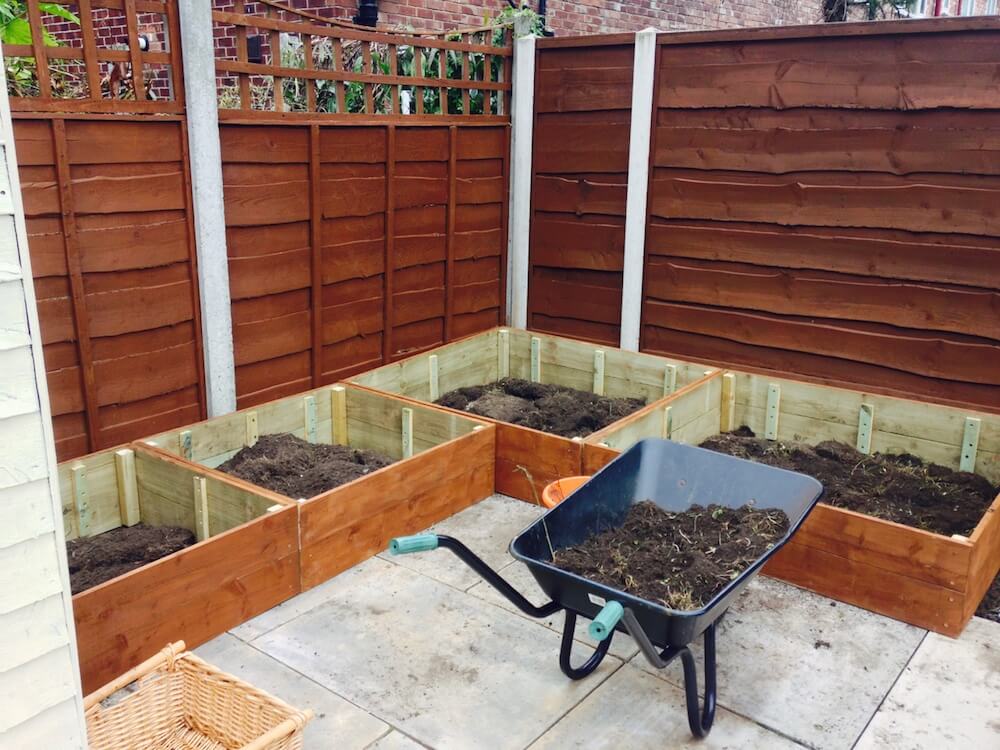
Once filled, you can then start to lay out your plants. I advise you always work to a planting plan If not, you may end up with 'pick and mix planting' where you just plonk things here and there and the overall look becomes a bit of a jumble.
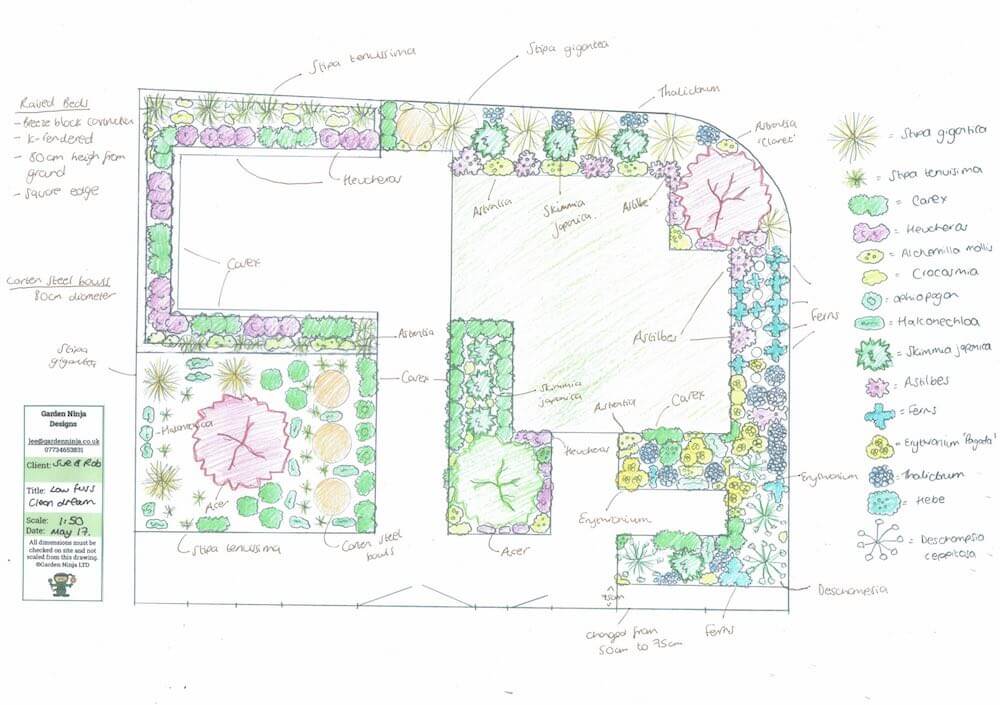
To make the best of your raised bed you need a cohesive planting plan. Usually, a good tip is to have the taller plants at the back, if it's a bed against a wall, and then smaller planting towards the front. If it's a bed you can walk all the way around, it can be a good idea to have the height in the middle with a row on either side of the plants. The possibilities are endless, but they must be well thought out!
One popular scheme for a South Facing garden is a prairie planting scheme that's both high-impact and low-maintenance.
Raised beds come in a number of budget options, from cheap to high-end expensive, depending on the material and finish. For the most part, raised beds are a really cost-effective way to garden.
As a starting point in order of cost, here are some ideas for raised bed prices for a 2000mm x 900mm x 400mm bed.
Using timber sleepers for raised beds is a popular option. Not only because they require little in way of assembly, but they last for years, with care for decades! Timber sleepers or railway sleepers allow you to build rectangular raised beds quickly.
The standard dimensions for a timber sleeper are: 250mm wide by 100mm high (or thick) by 2.6m long. Meaning the longest you can make a raised bed without having to tie it together is 2.6m.
In 2024, a timber sleeper costs around £25 per sleeper, making it a cost-effective option for raised bed construction.
Timber raised beds can last anywhere between 5 and 25 years. It all depends on the thickness, type of wood, and whether the timber has been pressure-treated. As a guide, a timber sleeper that has been pressure treated should last at least 20 years, if not longer.
Thin untreated soft wood like pine screwed to corner stakes or pegs will last far shorter, maybe 5-6 years.
Always double-check the timber your raised bed kit contains, or better still, build them yourselves using pressure-treated timber!
Ultimately raised beds come in all sorts of shapes and sizes and many materials. Raised beds are great for a quick-fix garden design and can be incorporated into any garden. A recent family garden transformation utilised them excellently, as can be seen here.
Whether growing your own veg or planning your own fantastic garden design, raised beds are an excellent choice. They allow you to pick your own soil and avoid growing in soggy wet clay or on uneven ground. So they are a great beginner gardening choice!
Now you've read my guide to raised beds I'd love to hear from you on Social media, either by Tweeting, Facebook or Instagram. Why not let me help you with my YouTube Gardening guides?
Happy Gardening!




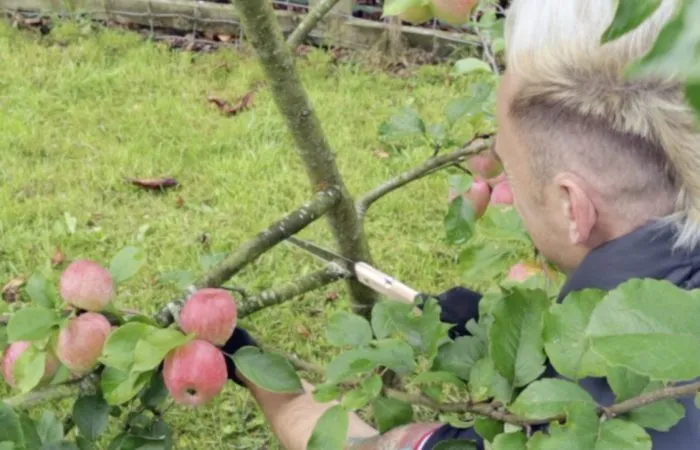
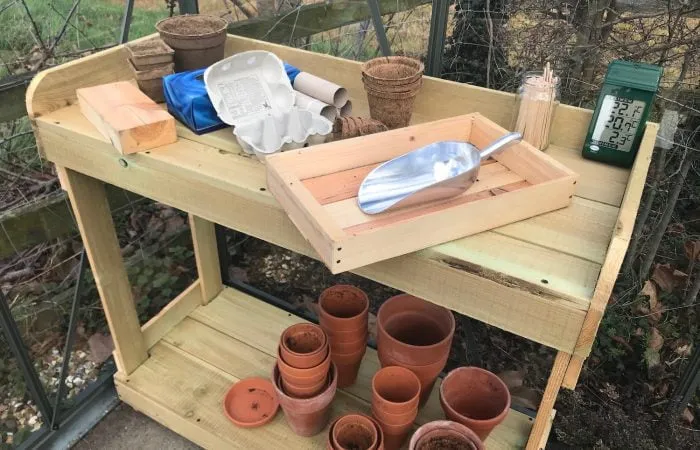
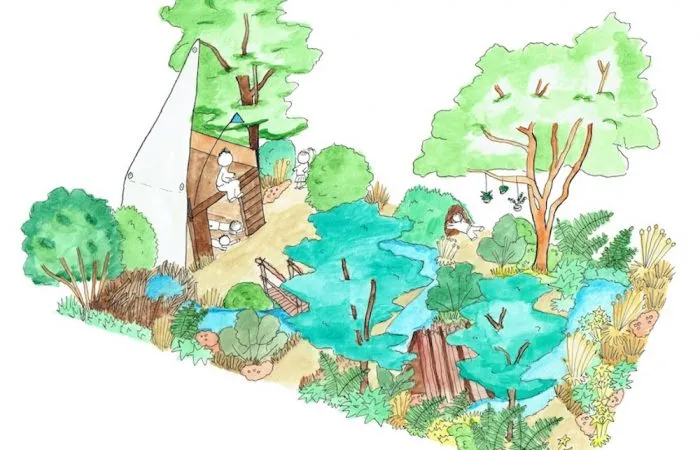
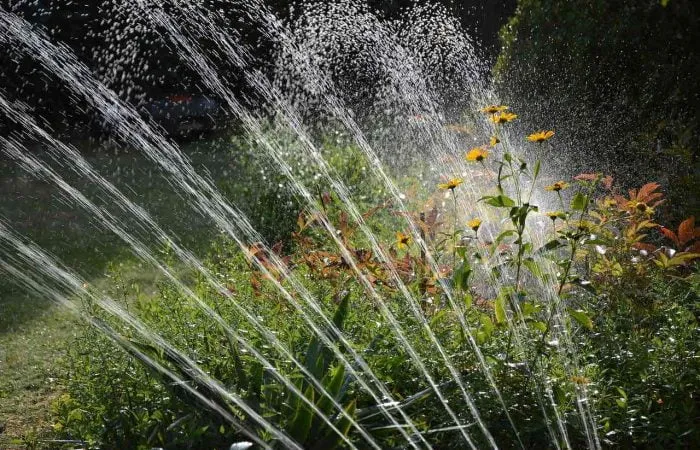

JOIN THE NINJAS
Join our Ninja community for extra guides & Discount Codes for Online Garden Courses!
Great detailed guide on making raised beds. I’m looking to make a raised bed for my succulents and this guide is all I need. Thanks for the great article.
I have some raised beds that I established a couple of years ago; unfortunately they’re starting to suffer from soil sinkage. Any tips for how to refill around permanent plantings without digging them up? I have a mix of small fruit trees and bushes in there so would rather not disturb them if I can avoid it…
Hi Judith, Thanks for your comment. The issue you’re going to have with topping up soil is that if you cover the graft or bases of trees and shrubs you can kill them bu suffocating the main stem. Depending on how low the soil has shrunk you may need to lift them slightly and then back fill. Alternatively, you could mulch deeply towards the front of the beds but leave a ring around the shrubs and trees, which will give the illusion of depth but without suffocating them. Hope that helps. Happy Gardening. Lee
Hi Lee, we have the teeniest garden and have bought a couple of triangular raised beds to help draw the eye through the garden. You mention height at the back which makes sense. And a prairie planting scheme. What plants would that include. Recommendations would be great and then I can share what you suggest on Instagram. Thanks
Hi Bev, Thanks for your comment. You can view my garden design services here if you’re looking for help with your specific garden. Many thanks. Lee https://www.gardenninja.co.uk/garden-design-services/
Great article thank you . Can I ask if the timber reused beds you describe can be painted ? If I used a wood paint/preservative would this harm the plants? Thanks
Hi Emma. Yes of course you can stain your raised beds. Look for water based stain or paint. That’s the best. It won’t harm the plants. Hope that helps. Lee